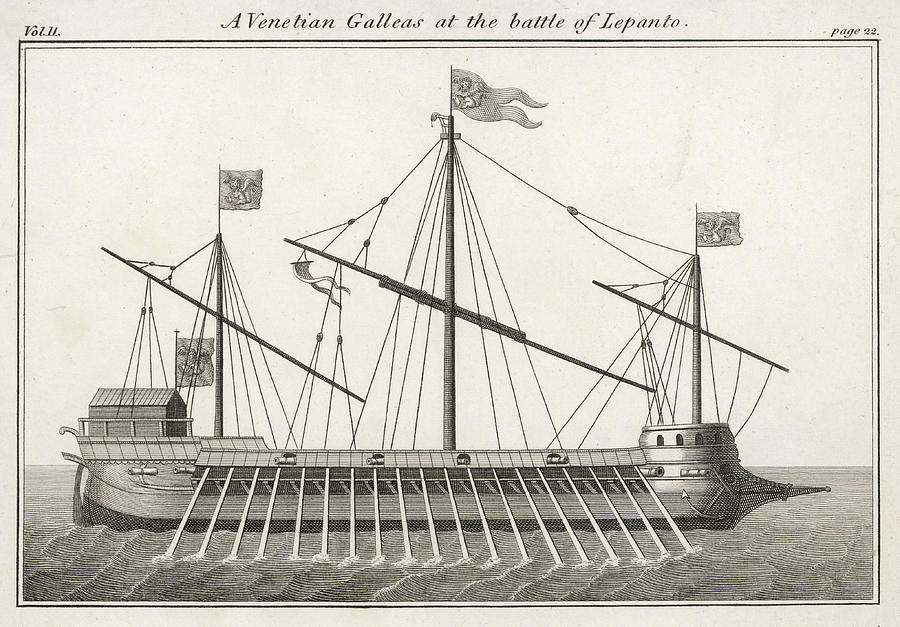 |
| A Venetian Galleas at the battle of Lepanto |
A Brief History Of Galleass
The coming of mighty men-of-war did not mean the immediate end of oared warships. In fact, some types of galleys and oared gunboats continued to serve well into the 19th century. Indeed, the Battle of Lepanto (1571), in which a combined European fleet defeated the Turkish fleet, differed little from traditional galley warfare with two exceptions. First, the scale of the action was very large, with more than 200 cannon-armed galleys on each side. Each of those galleys was propelled by 50 to 200 oarsmen and carried at least 50 additional men to fight and to man the guns and sails. Second, the European line of battle included six Venetian galleasses, a compromise type developed in the transition from oar to sail. These huge vessels, which depended on sail as well as oar, bristled with guns, including heavy ones in broadside. Although cumbersome to maneuver, their concentrated fire contributed importantly to victory.
 |
| Galleass ala Vile |
Galleasses outside the Mediterranean differed somewhat from Venice’s in that they were basically full-rigged sailing ships carrying broadsides of heavy guns and a bank of auxiliary oars for mobility. The hybrid existed only in small numbers and soon passed out of fashion to the north.
 |
| Spanish design of galleass |
 |
| White Bear 1564. Source Katipanti.net |



No comments:
Post a Comment